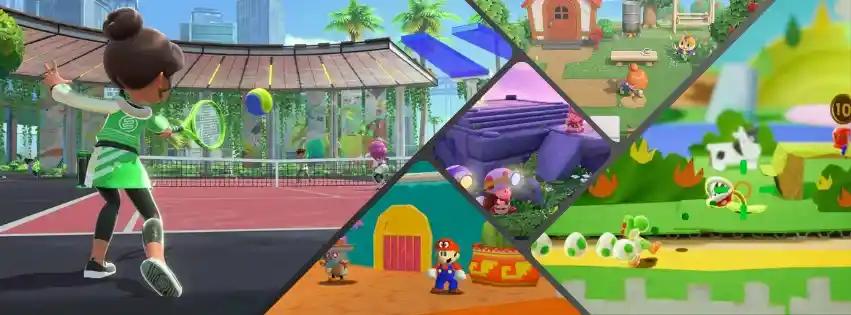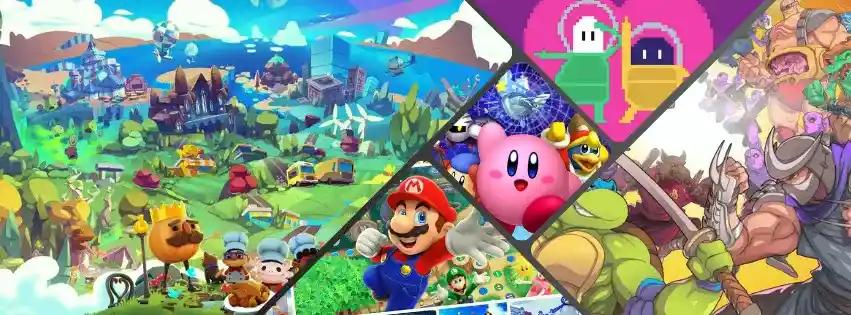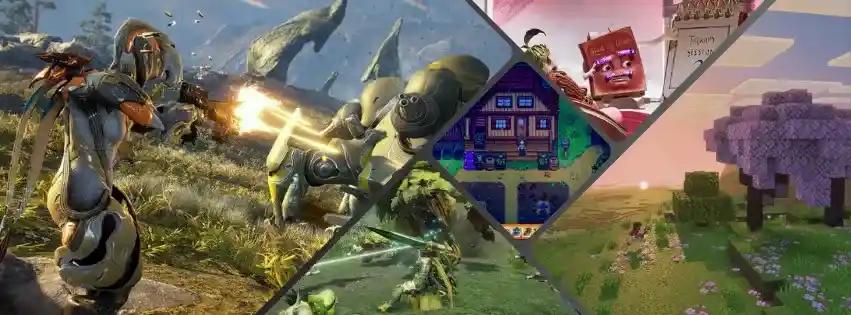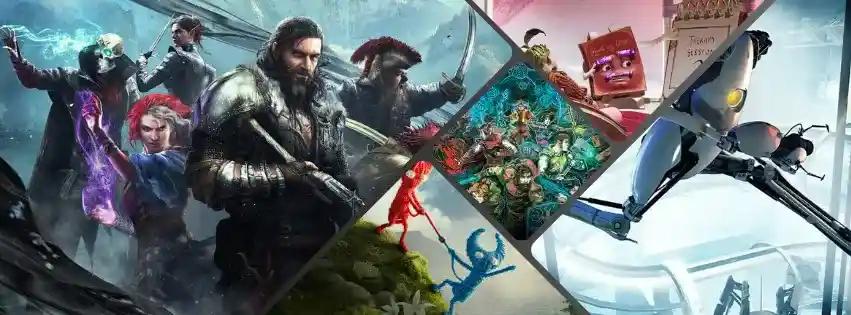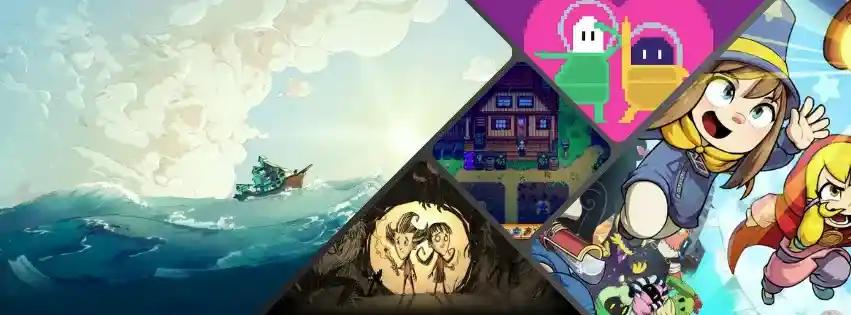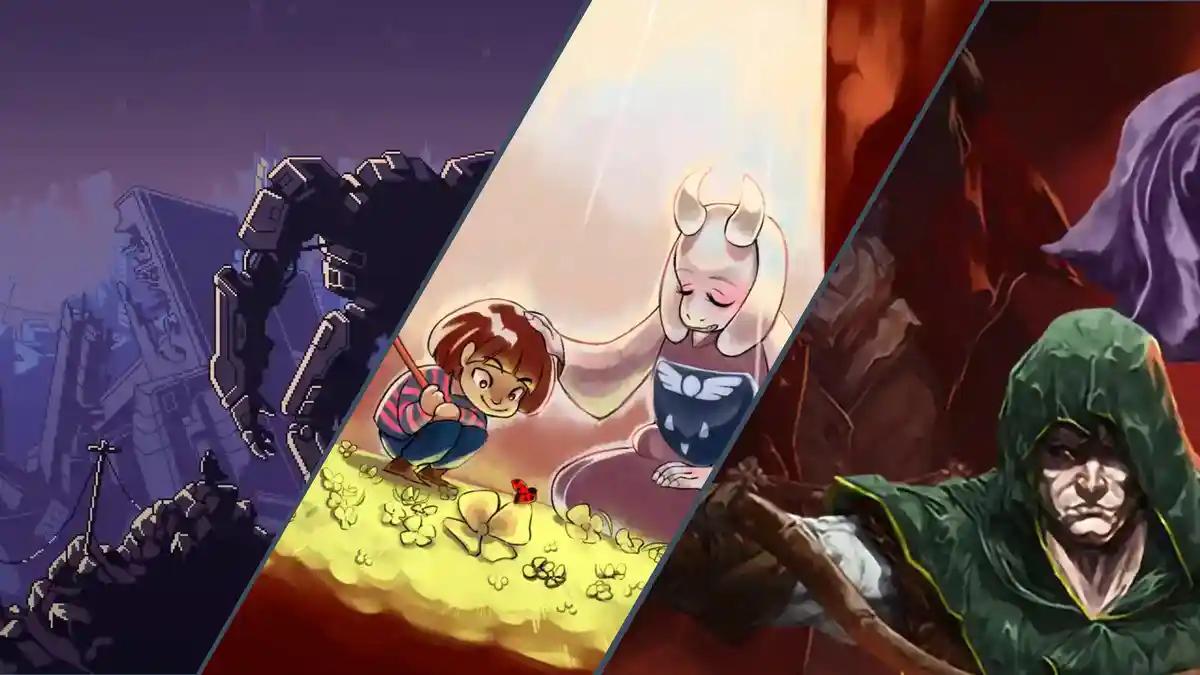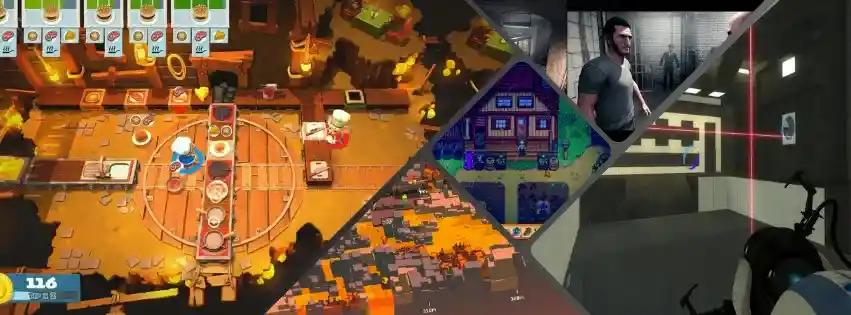Choosing learning-friendly games for kids can be tricky, so we evaluated Nintendo Switch titles that teach real skills, not just trivia. This guide highlights our top 10 educational picks plus five honorable mentions for ages roughly 3–14. Each game was scored on learning impact, kid-friendly design, how engaging it is over time, ease of use for young players, and stability on Switch. You’ll find concise reasons for each ranking, age-fit guidance, and notes on setup, modes, and session length to help families and educators pick the right fit.
This article is part of our guide: Best Nintendo Switch Family & Kids Games
How We Ranked These Games
We scored each game across five factors, weighting direct learning impact most heavily. The table outlines the weights and why each factor matters for kids on Switch.
Criterion | Weight | Why It Matters |
|---|---|---|
Educational Value | 40% | Measures how directly a game teaches core skills and concepts, with clear practice or lessons. |
Kid Friendly Design | 25% | Assesses age-appropriate controls, clear feedback, safe content, and gentle difficulty curves. |
Engagement Fun | 15% | Sustained engagement drives consistent practice and skill retention. |
Accessibility | 10% | Considers reading load, input options, and support for non-readers or motor differences. |
Switch Performance | 10% | Looks at stability, responsiveness, and clean UI on handheld or docked play. |
The Top 10 Best Educational Nintendo Switch Games for Kids
Below are our top 10 selections starting with our winner, based on the composite score described above. These games balance real learning with strong play design, and we note who each suits and how they fit family setups.

Game Builder Garage
“Nintendo's official visual programming course teaches game design through interactive lessons”
Editors Take
Game Builder Garage tops this list because it teaches core programming concepts through a structured sequence of seven interactive lessons and a flexible free-build space. The visual node system turns abstract logic into manipulable blocks, and progress tracking reinforces learning goals rather than just high scores. It’s ideal for visual learners and budding designers, with clear step-by-step prompts and instant playtesting to tighten the learn–build–iterate loop. While text-heavy instructions can slow younger kids, the project-based outcomes and flawless Switch execution make it the strongest learning-first experience here—especially for families or classrooms aiming for genuine coding literacy.
Full Details
Game Experience

Dr Kawashima's Brain Training for Nintendo Switch
“Nintendo's flagship brain training series with research-backed daily exercises”
Editors Take
Nintendo’s long-running brain training stands out for short, repeatable drills that build calculation speed, memory, and attention—backed by a research-informed training loop. Touch-first design and motion/IR exercises reduce reading barriers, and daily tracking makes progress visible for kids and parents. It’s approachable for mixed-age families, with quick tests and head-to-head modes that boost motivation without overwhelming younger players. Although it’s not a curriculum replacement, the routine it encourages and the breadth of cognitive practice justify its high placement, offering better production polish and input variety than most brain games while staying welcoming for kids.
Full Details
Game Experience

Thinkrolls: Kings & Queens
“235 physics-logic puzzles designed for preschool through early elementary ages”
Editors Take
Thinkrolls: Kings & Queens earns a top slot because it fills a crucial early-learner gap. With 235 puzzles and no reading required, it scaffolds logic and physics concepts through cause-and-effect play that’s perfect for ages 3–7. The gradual ramp is tuned for confidence building: early levels introduce simple interactions, later ones layer mechanics to promote planning and multi-step reasoning. Its clean presentation minimizes distractions, and bite-size levels keep sessions short and successful. While the learning is implicit rather than explicit instruction, the careful progression and age-appropriate design make it superb for first puzzle experiences.
Full Details
Game Experience
Captain Toad: Treasure Tracker
“3D puzzle adventures teaching spatial reasoning through perspective-based challenges”
Editors Take
Captain Toad delivers a rare focus on spatial reasoning and 3D visualization for kids. Rotating dioramas and path planning teach perspective-taking in a friendly, low-pressure format (“3D spatial puzzles requiring perspective rotation and path planning”). Difficulty scales through optional goals, and co-op lets a parent guide while a child explores (“parent/child collaborative problem-solving”). The result is systematic spatial practice wrapped in Nintendo polish—more incidental than instructional, but with clear, repeatable thinking skills. Minimal reading and a forgiving structure boost accessibility, making it a strong pick for ages 5–10 developing spatial skills foundational to STEM.
Full Details
Game Experience

Big Brain Academy: Brain vs. Brain
“Party-friendly brain training with 20 activities across five cognitive domains”
Editors Take
Big Brain Academy excels at keeping practice fun and frequent. With 20 activities across five domains, its adaptive scaling meets each player where they are, making it ideal for siblings or mixed-ability groups. Local multiplayer and ghost challenges sustain engagement beyond the initial novelty, while clear feedback loops encourage return play. It’s less a formal curriculum than a collection of well-designed cognitive drills, but the breadth of skills, fast rounds, and approachable icon-led prompts make it a dependable pick for families who want quick mental workouts that actually happen, not just sit on the home screen.
Full Details
Game Experience
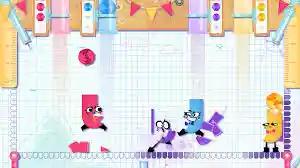
Snipperclips Plus - Cut it out, together!
“Cooperative shape-cutting puzzles teaching teamwork and spatial problem-solving”
Editors Take
Snipperclips Plus is the standout for cooperative learning. The shape-cutting mechanic demands communication, turn-taking, and shared planning, making social skills part of the puzzle (“cooperative puzzle-solving requires communication”). At the same time, it nurtures spatial reasoning and creative thinking through open-ended solutions (“shape-cutting mechanics teach spatial visualization”). No reading and simple controls boost accessibility for younger kids, and puzzle variety keeps groups experimenting. It’s not a formal curriculum, but few games model productive collaboration so naturally. For families or classrooms emphasizing teamwork alongside problem-solving, Snipperclips neatly fills a gap other entries don’t address.
Full Details
Game Experience

Nintendo Labo Toy-Con: Variety Kit
“Build functional cardboard peripherals to learn engineering and basic programming”
Editors Take
Labo’s Variety Kit uniquely bridges tactile building with on-screen feedback, teaching mechanics, basic engineering, and logic via Toy-Con Garage. The build–play–discover loop invites experimentation and reflection, and the step-by-step 3D instructions lower barriers for kids with limited reading. Educationally, it’s one of the truest STEM experiences on Switch. However, limited 2025 availability and required cardboard accessories are real drawbacks; adult help is recommended for complex builds. If you can source a kit, the hands-on learning and playful physics are outstanding. If not, consider digital-first alternatives from this list for easier access.
Full Details
Game Experience
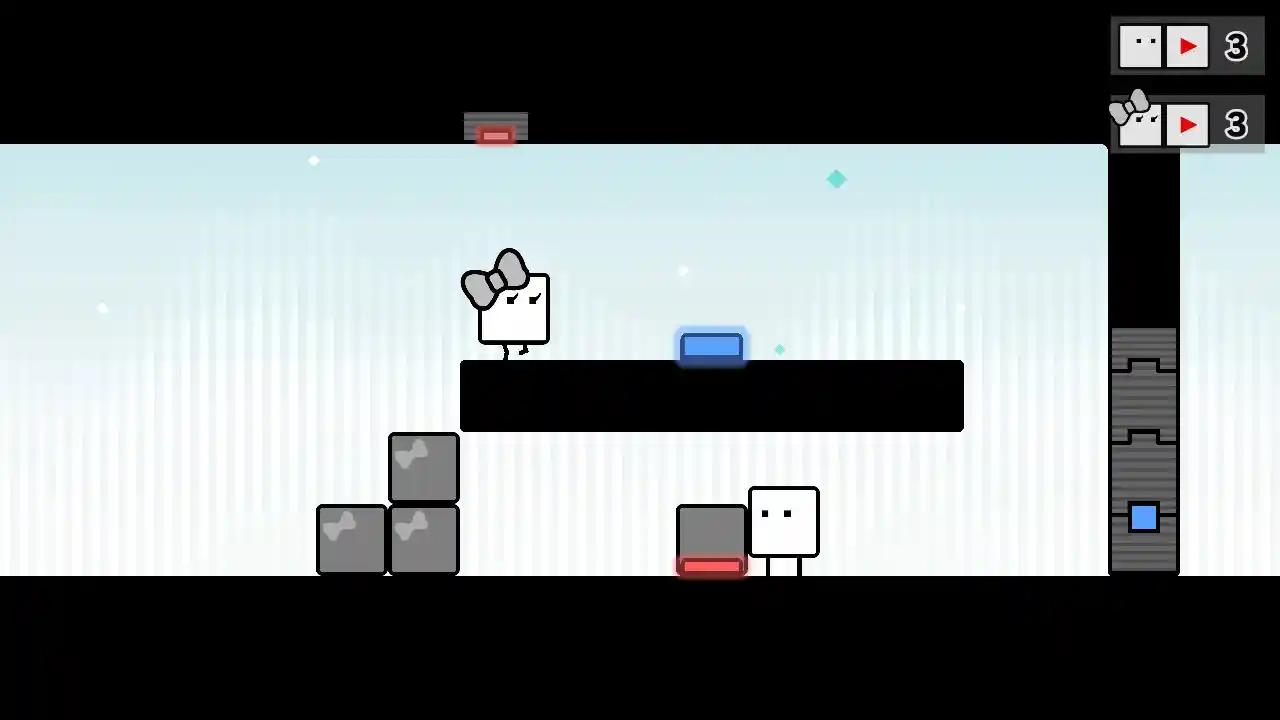
BOX BOY! + BOX GIRL!
“270+ minimalist logic puzzles teaching sequential thinking and spatial planning”
Editors Take
BoxBoy! + BoxGirl! offers clean, systematic logic training over 270+ puzzles. The box-spawning mechanic nudges kids toward sequential thinking, planning, and cause–effect reasoning, with levels that ramp from gentle to brain-teasing (“systematic difficulty progression”). Minimalist visuals reduce cognitive load so attention stays on reasoning, not spectacle (“minimal visuals reduce distractions”). Co-op adds a layer of communication and coordination without complicating controls. It doesn’t deliver explicit instruction, which keeps it below more curricular picks, but for pure logic practice in short, satisfying bursts, it’s one of the most polished options on Switch.
Full Details
Game Experience

Super Mario Maker 2
“Create and share Mario levels; teaches design thinking through optional tutorials”
Editors Take
Mario Maker 2 fosters systems thinking, iteration, and creative problem framing through its level editor, supported by optional dojo tutorials. Kids learn by making, testing, and refining, which mirrors real design processes. However, education is secondary to entertainment: the richest learning depends on adult guidance or self-directed goals, and reading is required for many tips. Strong engagement and endless content keep it valuable, but its instructional depth is less consistent than dedicated learning tools. Kept in the top 10 for creative learning potential, with the caveat that structure matters to unlock its benefits.
Full Details
Game Experience
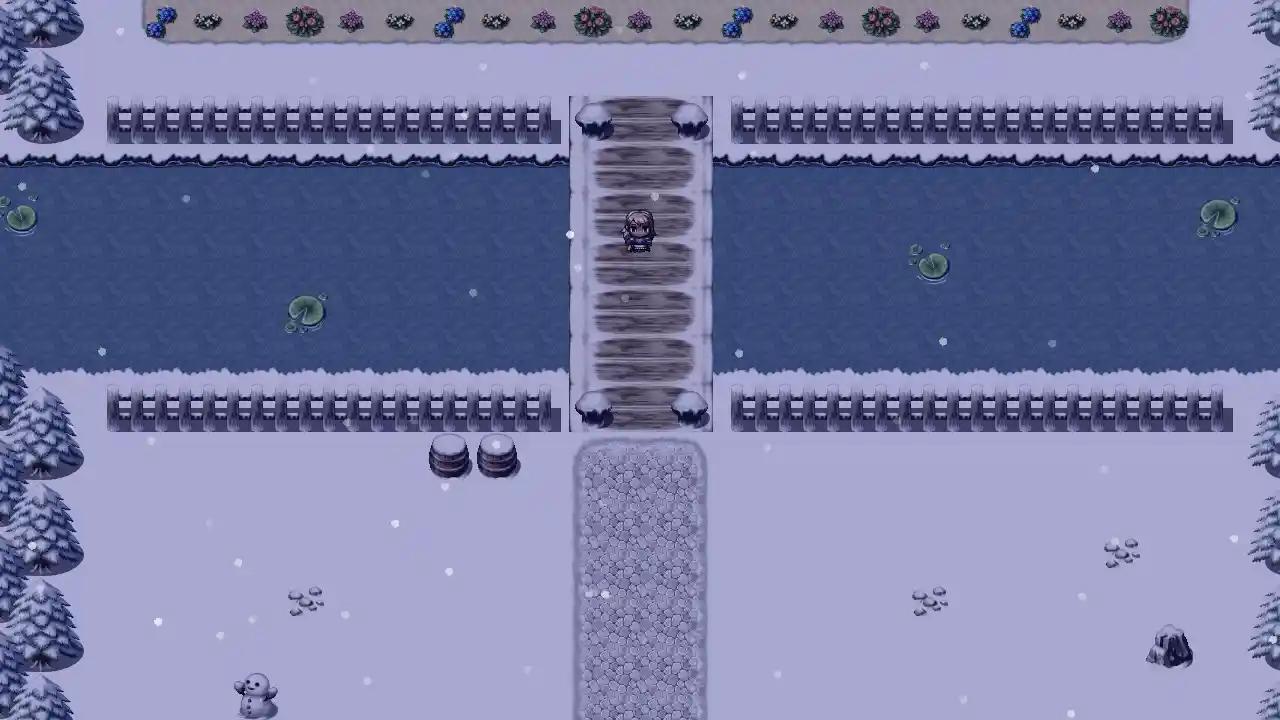
Learn Japanese To Survive! Hiragana Battle
“RPG adventure teaching Japanese hiragana through combat-based character recognition”
Editors Take
Hiragana Battle pairs explicit lessons and quizzes with a light RPG loop, making character recognition practice feel purposeful. It covers all 46 hiragana with repeated exposure in battles, and the structured lessons give clear checkpoints—strong attributes for language learning. Reading load and subject focus skew older, which is why it sits at #10, but for tweens ready to start Japanese basics it offers one of the clearest curriculum-style progressions on Switch. Engagement is steady rather than flashy, yet the learning outcomes are concrete and easy to measure across an 8–10 hour campaign.
Full Details
Game Experience
Related reading: Best Nintendo Switch Games for Kids
Honorable Mentions
These five games contribute valuable practice or subject coverage but missed the cut due to scope, availability, or fit for younger players. They’re still worth a look if they match your child’s needs.
Picross S9
Picross S9 is a powerhouse for logical deduction and number sense. Nonogram rules are simple, but the reasoning is rich: kids translate numeric clues into definite decisions, building process-of-elimination habits across hundreds of puzzles. It misses the top 10 mainly for presentation and age fit—its austere style appeals more to older kids, and the experience can feel grindy without built-in narrative or co-op hooks. Still, as a repeatable logic workout that scales beautifully, it’s a strong option for focused learners.
FUZE4 Nintendo Switch
FUZE4 delivers serious programming education with a text-based language, structured tutorials, and keyboard support. It’s excellent preparation for later CS pathways, emphasizing typing fluency, syntax, and debugging—areas visual tools don’t cover. However, that rigor limits its audience: a physical keyboard is strongly recommended, and the learning curve makes it best for motivated teens rather than young kids. On a kid-focused list, those barriers keep it just outside the top 10. For a 12+ learner ready for real code on a familiar device, FUZE4 is one of the most capable options on Switch.
BodyQuest
BodyQuest fills a valuable science niche with accessible coverage of major body systems and integrated quizzes. It’s a solid supplement for grades 2–6, turning abstract anatomy into a guided tour with check-for-understanding moments. The trade-offs are production value and variety—its mechanics are serviceable rather than standout, and engagement lags behind Nintendo’s first-party polish. Educationally it’s sound, but compared with higher-ranking entries that pair rigorous learning with stronger presentation, BodyQuest feels more like a class aid than a go-to family game. If your learner is tackling biology standards, it’s a targeted, useful pick.
MathLand
MathLand offers straightforward practice in the four operations with a pirate theme and adjustable difficulty. For early elementary students needing fact fluency, it’s a tidy way to mix drill into short play sessions. It narrowly misses the top 10 because the learning model leans heavily on rote practice and repetition; problem types and contexts don’t deepen much over time, so motivation can taper compared with games that embed math in richer puzzles or systems. Good for targeted arithmetic refreshers—especially addition and subtraction—but less compelling than picks that stretch reasoning alongside computation.
The Oregon Trail
The Oregon Trail brings 19th-century U.S. history to life through resource trade-offs, hardship, and geography, supported by an in-game codex for context. It’s a meaningful social studies supplement, but it just misses the top 10 due to reading load, heavier themes, and an emphasis on survival gameplay over explicit instructional goals. For families with older kids—or classrooms ready to discuss historical perspectives—it can catalyze great conversations and reflective decision-making. If you’re seeking explicit skills practice for younger learners, picks in the main list provide clearer guidance and better accessibility.
Related Reading: Top 10 Best Switch Couch & Split-Screen Co-Op Games.
Frequently Asked Questions
Families often ask about age fit, non-reader support, accessories, and online safety. These short answers cover the most common considerations.
What are the best picks for non-readers or early readers?
Thinkrolls: Kings & Queens, Big Brain Academy: Brain vs. Brain, Captain Toad: Treasure Tracker, and Snipperclips Plus all minimize text and rely on clear visual cues. Dr. Kawashima’s Brain Training also uses touch and motion to lower reading demands.
Which games focus on coding or design skills?
Game Builder Garage teaches visual programming through guided projects. FUZE4 (honorable mention) is a text-based coding environment suited to teens. Super Mario Maker 2 builds design thinking and iteration through level creation, though learning goals are self-directed.
Do any games require extra accessories?
Nintendo Labo Variety Kit requires the specific cardboard kit and Joy-Con. A stylus is optional but helpful for touch-focused games like Brain Training or Mario Maker 2. All other picks work with standard Joy-Con or Pro Controller.
How much daily time is enough for real progress?
Short, consistent sessions work best: 10–20 minutes for brain training, logic puzzles, or language drills. Project-based tools (Game Builder Garage) benefit from longer, less frequent sessions focused on building and iteration.
Is online sharing safe for kids?
Most picks are local-only. Super Mario Maker 2 includes online sharing; use Nintendo parental controls, supervise uploads, and stick to trusted creators when browsing community levels.
Conclusion
The Switch has a surprisingly deep bench of learning-first games across coding, logic, spatial thinking, and languages. Use this list to match a child’s age, attention span, and goals to the right pick, then lean on short, consistent play sessions for real progress. When possible, play together—co-op puzzles and daily training modes benefit from coaching and conversation. We’ll continue to review new releases and update scores as availability and features change. Ready for more tailored picks? Try our Recommendations Engine for suggestions that match your play style.

